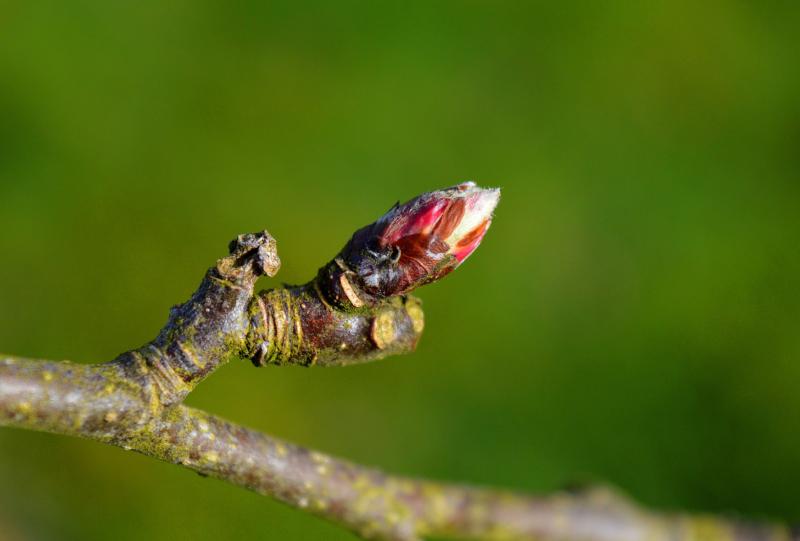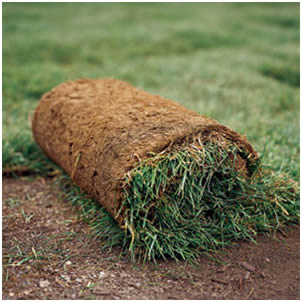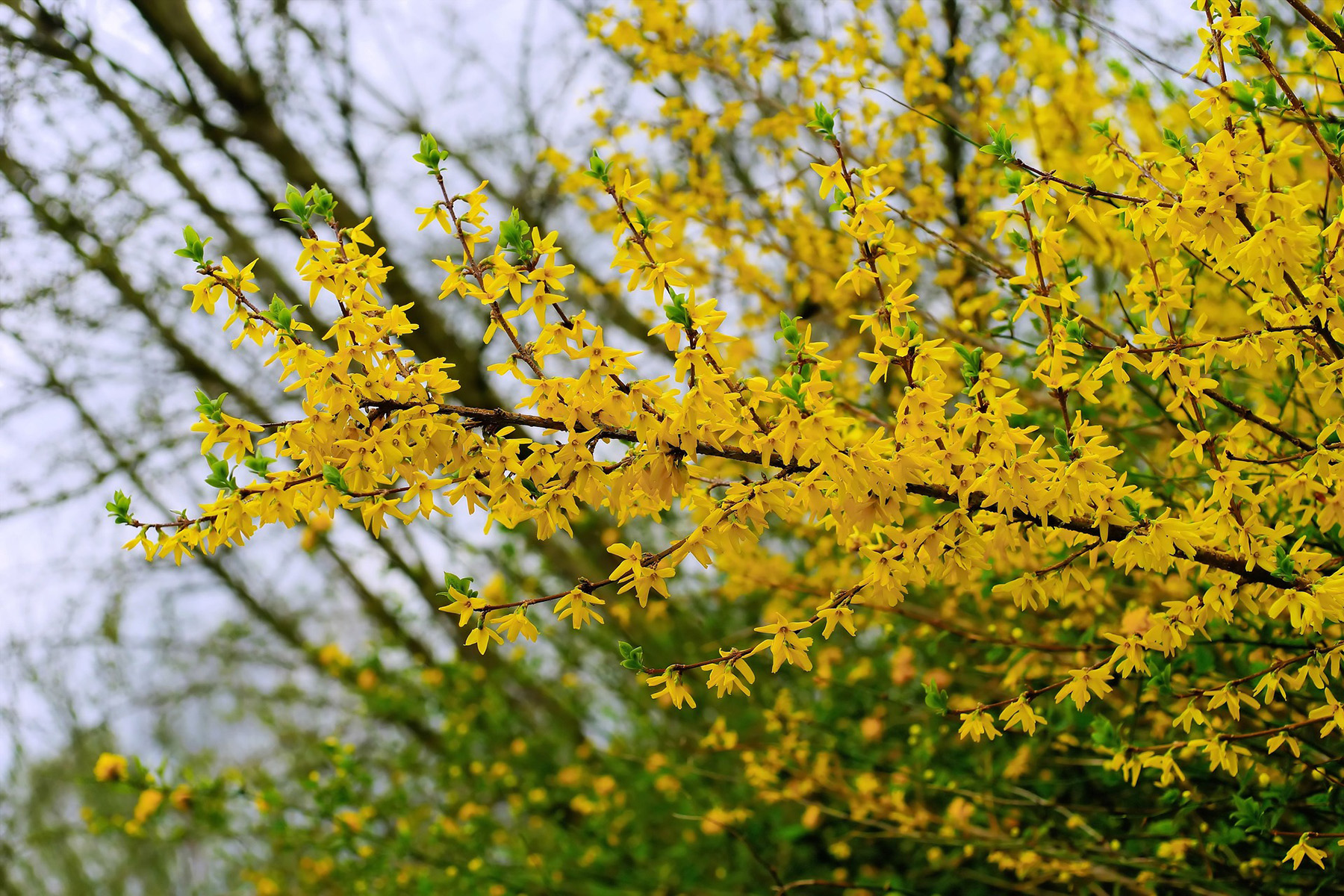
After waiting all winter for a new growing season to start, when spring finally does arrive it seems to hit us hard and fast. Then before we know it, spring is gone and we’re in the middle of summer.
There are many tasks to accomplish in the spring landscape. To help you develop a plan and not get behind or miss your “window of opportunity”, here’s a quick rundown of common landscape projects listed in order of attack.
Shade and Fruit Tree Pruning. Complete pruning before flower buds open. Wounds close fastest when pruning is done right before new growth begins and disease spread is limited. Pruning after blooming and growth has begun can be done, but use extra care to avoid spreading diseases like fireblight and other common fruit diseases. Do not use wound dressings.
Lawn aeration is the best way to alleviate soil compaction, improve soil texture, reduce thatch and prepare for overseeding. Aerification can begin once the lawn is actively growing, often as early as late March through late May for Kentucky bluegrass or tall fescue lawns. Depending on the quality of your soil, aerification once a year in spring or twice a year in spring and fall can be very beneficial.
Getting Your Lawn Ready for Summer – Aeration.
Lawn Seeding. How does your lawn look this spring? If it’s thin after last fall’s drought, some overseeding may be needed. Seeding can begin in mid to late April, through May 15th. Provide good seed-soil contact through aerification. If seeding can’t be done before May 15th, then wait until fall to overseed.
Careful selection of a preemergent herbicide is necessary for your seeding to be successful. Mesotrione and siduron (Tupersan) are the only preemergent chemicals that can be used on lawns while seeding. Both kill germinating crabgrass and foxtail, but will not kill germinating Kentucky bluegrass or tall fescue seeds.
Mesotrione is the active ingredient in Scott’s Turf Builder Triple Action Built for Seeding and is one of the most common homeowner products in stores for new seedings. If any other preemergent was used – including prodiamine, benefin, balan, dithiopyr – germinating grass seeds will be killed along with weed seeds.
Planting Vegetables and Ornamentals. Many gardeners are anxious to start planting their vegetable gardens, but planting too early is not a good idea. Using specific planting dates, such as planting potatoes on Good Friday, is also not the best practice due to the variable temperatures we experience in any given Nebraska spring. Measuring and planting based on soil temperatures is a better practice.
To view current soil temperatures, visit Crop Watch. Review the publication below for ideal soil temperatures for germination of each vegetable type.
Vegetable Seed Storage and Germination Requirements.
Preemergent Weed Control. Crabgrass seed, a summer annual, begins germination when soil temperatures reach 55 degrees F at a 2 to 4-inch depth for several consecutive days. In most years, this typically does not occur until early May in Lincoln. In years when crabgrass germination does occur early, young seedlings are often killed by normal spring freezes. The targeted window to apply preemergence herbicides for crabgrass in eastern Nebraska is April 20 to May 5.
 Lawn care companies with many properties to maintain often begin applications earlier using products with a very long residual. Homeowners who have the flexibility to apply preemergent at a specific time should wait to make their application and get the longest residual control from their product.
Lawn care companies with many properties to maintain often begin applications earlier using products with a very long residual. Homeowners who have the flexibility to apply preemergent at a specific time should wait to make their application and get the longest residual control from their product.
Lawn Sodding. If resodding damaged lawn areas is the preferred option, sod can be installed anytime it’s available at the garden center and your soil is not frozen. However, sod may not be available until May. Before sodding, remove the dead grass, regrading the area if necessary, so the new sod can be laid on bare soil.
 Pruning Spring Flowering Shrubs. Early flowering shrubs – such as forsythia, lilac, mockorange and weigelia – should be pruned right after they finish blooming. Spring blooming shrubs bloom on the previous year’s wood. Pruning during winter or early spring removes blooming wood and will reduce or prevent blooming this season.
Pruning Spring Flowering Shrubs. Early flowering shrubs – such as forsythia, lilac, mockorange and weigelia – should be pruned right after they finish blooming. Spring blooming shrubs bloom on the previous year’s wood. Pruning during winter or early spring removes blooming wood and will reduce or prevent blooming this season.
White Grub Control. “When should I apply control for white grubs?” This a common spring question for many home lawn managers. It’s still too early for this application yet, the ideal time is mid to late June. Stay tuned for more information on grub control in a few weeks.
Hopefully these tips will help developing a manageable spring to-do list easier and get your landscape off to a good start this year. Happy spring!
Reference to commercial products is made with the understanding that no discrimination is intended and no endorsement by Nebraska Extension is implied. Mention does not imply approval or constitute endorsement by Nebraska Extension. Nor does it imply discrimination against other similar products.
Images
- Aerator. Image by John Fech, Nebraska Extension.
- New sod should be laid on bare soil. Image from Pixabay.com.
- Spring blooming shrubs, like forsythia, should be pruned after they have finished blooming. Image from Pixabay.com.